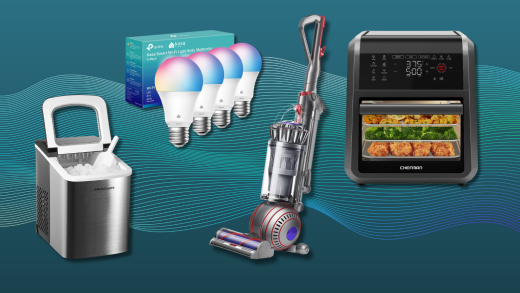Conversational AI amalgamates traditional software, such as chatbots or some form (voice or text) of interactive virtual assistants, with large volumes of data and machine learning algorithms to mimic human interactions. This imitation of human interactions is made possible by its underlying technologies — machine learning, more specifically, Natural Language Processing (NLP).
Conversational AI can recognize speech input and text input and translate the same across various languages to provide customer support using either a typed or spoken interface. A voice assistant or a chatbot empowered by conversational AI is not only a more intuitive software for the end user but is also capable of comprehensively understanding the nuances of a human query. Hence, conversational AI, in a sense, enables effective communication and interaction between computers and humans.
Before getting into the workings of conversational AI, let us quickly gain an understanding of its underlying technologies:
Natural Language Processing: NLP is a niche of Artificial Intelligence that gives computers the ability to comprehend (process) human language serving as an input in the form of spoken words or text. It enables the computer to understand the real intent and the sentiment of the writer or the speaker.
Natural Language Understanding (NLU): Like NLP, NLU also helps computers understand human language, thus enabling human-computer interaction. But, it is NLU that helps computers in responding back to humans in their own languages.
Also read: The Growing Relevance of Hyperautomation in ITOps
How Does Conversational AI Work?
Chatbots or voice assistants provide customer support by engaging in “conversation” with humans. However, instead of understanding the context of the conversation, they pick up on specific keywords that trigger a predefined response. These responses are based on the scripts and dialogues written by humans. But, conversational AI can respond (independent of human involvement) by engaging in contextual dialogue with the users and understanding their queries. As the utilization of said AI increases, the collection of user inputs gets larger, thus making your AI better at recognizing patterns, making predictions, and triggering responses.
Let’s look at how a conversational Al engages with the customers:
Step 1: Input Generation
A user provides input to the AI either in the form of text or spoken words.
Step 2: Input Analysis
If the input data is in the form of text, the conversational AI applies natural language understanding (NLU) to make sense of the words provided and decipher the context and sentiment of the writer. On the other hand, if the input data is in the form of spoken words, the conversational AI first applies automatic speech recognition (ASR) to convert the spoken words into a text-based input. Then, this input is further analyzed by the application of NLU.
Step 3: Dialogue Management
In this step, a combination of natural language processing and natural language generation is used to convert unstructured data into structured data, which is then used to respond to the user’s query.
Step 4: Reinforcement Learning
In this step, the user inputs are collected and analyzed to refine AI-generated replies. As this dataset grows, your AI progressively teaches itself by training its algorithms to make the correct sequences of decisions.
Now that we have a decent understanding of conversational AI let’s look at some of its conventional uses.
Benefits of Conversational AI
Conversational AI has been leveraged to yield benefits for all businesses, from SMBs to large-scale enterprises. These benefits can be classified into either of the two categories:
Customer-Centric Benefits
- To deliver rapid and accurate responses to busy and impatient customers, thus providing effective customer support and a delightful customer experience.
- Conversational AI also finds application in providing personalized guidance or tutorials to customers either in navigating the website or through a process. This application is especially helpful to customers in navigating bank websites.
Organization-Centric Benefits
- By providing users with an interactive and intuitive live chat window, conversational AI can help your organization better convert website visitors into paying customers.
- Since the AI can ask tailored questions and offer accurate support, it effectively helps reduce the load of the human agents, thus freeing them for rather complex queries.
Also read: AI and Observability Platforms to Alter DevOps Economics
Artificial Intelligence in ITOps
As the name suggests, artificial intelligence for cloud and IT operations or AIOps is the application of AI in IT operations. AIOps uses machine learning, Big Data, and advanced analytics to enhance and automate IT operations by monitoring, identifying, and responding to IT-related operational issues in real time.
The pandemic has given rise to a sudden spike in web traffic, which has led to a massive surge of tech support queries. The demand is so high that even IT help desk technicians aren’t quick enough to match up with the flood of tickets coming their way on a day-to-day basis. As a result, automating routine ITOps tasks has become absolutely imperative to keep up with the sheer pace and volume of these queries.
By automating mundane tasks, help desk agents can focus their attention on solving critical and high-value issues. For example, many help desk queries cover the same small core of questions, and consequently the help desk technicians would already have compiled a list of FAQs. A conversational AI-based digital assistant can consume these FAQs and appropriately respond when asked a similar question based on that information.
If the chatbot encounters a complex question beyond its scope or an escalation from the customer end, the chatbot seamlessly transfers the customer to a human agent. But along with transferring the user, the chatbot can also provide a conversation transcript to the agent for better context.
With this approach, a customer gets help 24×7, and their issue gets resolved much faster. It also enhances customer self service.
Trends and Future Scope
The pandemic has been a rude awakening for many businesses, showing organizations their woeful unpreparedness in handling a sudden change. The year 2020 saw an unexpected, almost overnight surge in customer service traffic. Only the companies with a functional and robust virtual agent in place could mitigate the sudden rise in inquiry volume.
And seemingly, this is just the tip of the iceberg. Gartner predicts that by 2030, about a billion service tickets would be raised by virtual assistants or their similar counterparts. Also, by 2022, 70% of white-collar workers will interact with some form of conversational AI on a daily basis. And if those interactions were to be meaningful, it clearly indicates that conversational AI vendors will have to step up their game.
As the usage of conversational AI surges, more organizations are looking for low-code/no-code platform-based models to implement the solution quickly without relying too much on IT.
The conversation AI bots of the future would be highly personalized and engage in contextual conversations with the users, lending them a human touch. They will understand the context and remember the past dialogues and the preferences of that particular user. Furthermore, they may carry this context across multiple conversations, thus making the user experience seamless and intuitive. Such bots will no longer be restricted to customer support but used to cross-sell or up-sell products to prospective customers.
Augmented reality for mobile/web-based applications is still a relatively new technology. Hence its usage is still limited as customers are yet not accustomed to it. But AR is predicted to be the next big thing for increasing consumer engagement. For example, a chatbot leveraging conversational AI can use this technology to drive sales or provide support to the customers as an online concierge.
Read next: The State of ITOps: Digital Transformation, Technical Debt and Budgets
The post Leveraging Conversational AI to Improve ITOps appeared first on IT Business Edge.












